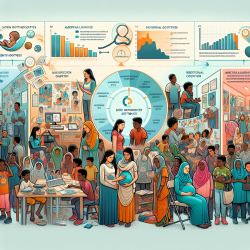Food safety is a critical component of public health and international trade. The research article "Food Safety Risk Assessment Systems Utilized by China, Australia/New Zealand, Canada, and the United States" provides valuable insights into how different countries manage food safety risks. This blog post will explore how practitioners can improve their skills by implementing these findings or conducting further research.
The Importance of International Standards
The global nature of food trade necessitates adherence to international standards like those set by the Codex Alimentarius Commission. These standards help ensure that food safety risk assessments are based on scientific evidence and reflect global best practices. Practitioners should familiarize themselves with these standards to enhance their understanding of food safety requirements across different markets.
Cohesiveness Among Stakeholders
A key finding from the research is the importance of cohesiveness among stakeholders in delivering effective food safety risk assessments. Countries like Australia and New Zealand have established strong networks involving government agencies, research institutions, and private industry. This collaboration allows for transparent communication and successful implementation of food safety measures. Practitioners should strive to build similar networks within their regions to improve food safety outcomes.
Capacity Building in Food Safety
The research highlights a gap in capacity-building for food safety risk assessment in China. This gap is attributed to a lack of skilled personnel and resources. Practitioners can address this by seeking training opportunities and collaborating with international experts to enhance their knowledge and skills in food safety risk assessment.
Resource Investment in Food Safety Management
The study emphasizes the need for significant investment in food safety management. Countries like Canada and the United States have allocated substantial resources to improve their food safety systems. Practitioners should advocate for increased funding and support for food safety initiatives within their organizations and communities.
Encouraging Further Research
The research article provides a comprehensive comparison of food safety systems across several countries. However, there is always room for further exploration. Practitioners are encouraged to conduct additional research on specific aspects of food safety risk assessment that are relevant to their practice. This could include studying new technologies or methodologies that could enhance current systems.










